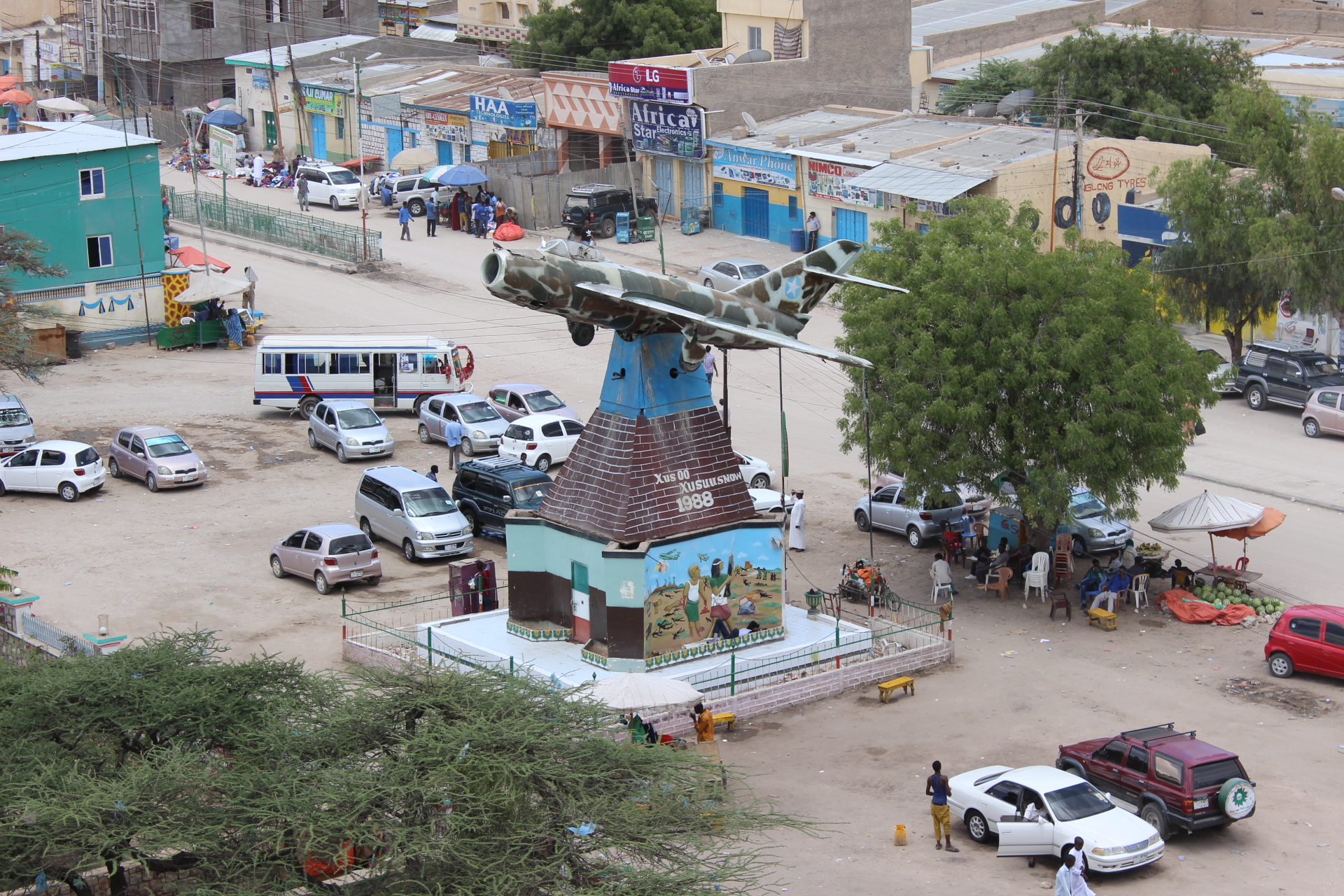Statue of Liberty
The “Statue of Liberty and Country Not Yet Discovered” locally known as (Taalada Xoriyadda iyo Dal Jirka Dahsoon) is the most visible landmarks in Hargeisa, the capital of Somaliland, the self-declared semi-autonomous region of Somalia. It is a Russian MiG fighter jet in the Freedom Square in downtown Hargeisa. After the 1988 bombing of Hargeisa city by the regime of Mohamed Siyad Barre, mercenary fighters from South Africa who were hired to bomb the city (after native Somalis absconded from the mission, which targeted their compatriots), abandoned three fighter jets at the airport in Hargeisa. In 1998, seven years after the declaration of independence from Somalia, progressive Mayor Abdi Cawo had one of these jets moved to Hargeisa Freedom Square and monumentalized. It is an actual fighter jet. It is popular artefact. It is perhaps the face of Somaliland as a new nation state. You will find the picture of this monument on websites advertising Somaliland’s tourism, or on reports on stats and figures of Somaliland or just the city Hargeisa. International journalists covering Somaliland will often have this picture/footage of the monument, and even reports by local journalists on the monumental sights of Somaliland will include a picture of this monument. Talks/writings about Somaliland’s secession and independence from Somalia are often supported by pictures of this monument. On walls in different parts of the city, you will find drawings of the monument. I use it to appreciate new nationalist imaginaries of Somaliland after the year when secession was declared. It mobilises a specific history, identity and aspiration about the people of Somaliland:
Located in the centre of the business district, the surrounding of this monument double as a car park during the morning hours before it is all fitted with chairs in the afternoon as people congregate around for “tea and talk” a common engagement among Hargeisans, and Somalis more generally. The monument is erected on a pyramid-like construction with its sidewalls carrying images, paintings, and writing explaining particular moments of history—especially the events of 1988 when the bombing happened, and generally the SNM war that led to independence. The monument is also inscribed with text and drawing. I read this monument and its drawings and writings as text. In the context of the war history, and the region's campaign for international recognition, I argue that this monument (and several others in this pattern) speak a language: of war, violence, devastation, and death, but also of resilience and determination for independence. Images beginning from the Russian-made fighter jet itself, guns, tanks and red-topped soldiers (the Hangash, as former Somali President, Siyyad Barre's most feared men were known) are reminders of the painful history, and the resolve ahead. They suggest an environment of anarchy. Mutilated bodies on the other hand, decapitated heads and maimed limbs may suggest war crimes of apocalyptic levels of violence--a crime that the government in Somaliland often accuses Somalia. The writing on one of the walls signals to a memorialisation of the victimhood of the Somalilanders. The enemy is also made visible for permanent caution. Indeed, I argue that this assumption of the enemy in this monuments defines identity and relations with Somalia in the daily life of the Somalilanders.

Commentary on Rachel Tanur's Works: US Sign